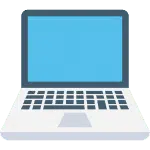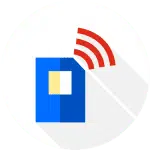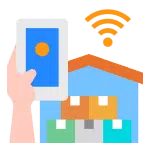Emergency Connectivity Fund
The American Rescue Plan Act (ARPA) of 2021 includes $7.17 billion for the Emergency Connectivity Fund (ECF) program. The ECF will provide funding for public and tribal libraries and K12 schools to purchase connected devices and broadband internet connections for use off of library and school grounds by library patrons, students, and teachers and staff who otherwise don’t have internet access.
The ECF presents an unprecedented funding opportunity for libraries to expand broadband equity to those who need it most beyond the confines of library walls. With 100 percent reimbursement of costs for eligible equipment and services and the ability to receive upfront reimbursement, now is the moment to think big about how your library can leverage new funding to boost current technology lending efforts to reach more people or launch new services to connect your community…or both! Your library may also take advantage of other ARPA funds to support related digital inclusion needs, such as programming, staffing, and staff training.

A Guide To Federal Education Technology Funding
Background

School Bus WI-fi

Premier Connectivity Devices

Hotspots

RhinoWare®

Occupancy & People Counting

Remote Access
How Can My Library Use ECF?

Contact Us
For more information about Emergency Connectivity Fund please complete this form and an E-rate Guide will contact you as soon as possible.
Info
Call Us: 866-545-0555
Email: solutions@wholesalecomputers.com
ECF Frequently Asked Questions
Find answers to our most commonly asked questions below
Students, school staff, and library patrons with credentials Specifically named in the order are students, school staff, and library patrons who would otherwise lack access to a device sufficient to enable them to engage in remote learning. Applicants may purchase one device per student; this applies to every student regardless of their NSLP eligibility. The order does not limit support to just “teachers” either, rather it incorporates a broader population by identifying “school staff” as eligible for support. From the FCC release “To ensure that connected devices supported by this Program are used primarily for educational purposes and by students, school staff, and library patrons, we require schools and libraries to restrict access to eligible connected devices to only those students, school staff, and library patrons with appropriate credentials.”
Any place other than the school or library campus In the ECF Order, the FCC defined eligible locations as basically anyplace other than the school or library (see paragraph 48). While they acknowledged that remote learning would take place in the home for most students and library patrons, the FCC did not limit or define where remote learning can happen. The only location limit was to “prohibit schools and libraries from seeking and receiving reimbursement for eligible equipment and services purchased for use solely at the school or library”. (¶52). If the connected device was purchased with the intent of providing off-campus remote learning opportunities, the FCC acknowledged that the device may be used on-campus as well. This is in line with the ECF’s goal to close the homework gap.
Off-campus internet services Internet access services include “fixed” services like cable modem, DSL, or residential fiber service, as well as wireless services like 5G/LTE service to hotspot devices. Equipment necessary to make Internet connections functional, such as modems, routers, and hotspots are eligible as well. Self-provisioned networks and “datacasting” solutions are presumed to be ineligible, except in cases where “no commercially available [Internet] services exist.” In limited cases where there is no commercially available service that can reach students, school staff, or library patrons, the FCC can fund the construction of networks “and/or purchase customer premises equipment to receive datacasting services.” CBRS and private LTE solutions were specifically excluded from the definition of a “router” or “modem,” but could potentially be funded in situations where there is no commercially available service that can reach a given user population.
Wi-fi enabled laptop computers Eligible connected devices include laptops and tablet computers, with the FCC setting an expectation that the devices will be “Wi-Fi enabled and able to support video conferencing platforms.” While the FCC did not impose a specific screen size requirement for eligible devices, they did exclude both desktop computers and smartphones from the ECF’s eligible services list. Ineligible equipment and services include cybersecurity solutions, mobile phones/smart phones, standalone costs for peripherals like cameras or microphones, curriculum and/or learning management systems, videoconference service subscriptions (e.g. Zoom or Teams), and voice services.
Discounts for services from July 1, 2021 to June 30, 2022 Services and equipment delivered from July 1, 2021 through June 30, 2022, are the initial priority. Only those items provided during this timeframe will qualify for support in the first filing window. If there are funds remaining after the first filing window, the FCC may decide to open a subsequent filing window(s), either for new purchases and/or for purchases made during the March 1, 2020 through June 30, 2021.
Apply this summer for funds committed this fall The initial ECF filing window is estimated to open in June and last for 45 days. Applications will be submitted using the existing E-rate online portal (“EPC”). Funding commitments are expected to start by early September with 50% of decisions released by October. Subsequent filing windows, if any, will be announced after the close of the first.
Hotspots and laptops subject to maximum reimbursements $250 is the “maximum reasonable cost for a Wi-Fi hotspot provided by a school or library to a student, school staff member, or library patron”. An applicant can spend more but will only be reimbursed up to $250 per hotspot. This maximum allowable cost is for the equipment itself, not the service. The cost of the service is not subject to a pre-defined price cap. $400 is the maximum reimbursement amount for laptops, tablets, etc. An applicant can spend more but will only reimbursed up to $400 per device. An applicant may request a waiver of the $400 limit for users with disabilities, if necessary. Other items, such as modems and routers, are not subject to a specific price cap, but USAC will review requests and identify those that are substantially higher than normal.
Existing E-rate forms will be used for paperwork The ECF program will be administered by USAC, and, where possible, will use forms that exist within the online E-rate portal (EPC) The FCC has indicated the E-rate forms that will be used are the Form 471, Form 472 (BEAR), and Form 474 (SPI). The Form 471 will be used as the vehicle for applying. The Form 472 (BEAR) and Form 474 (SPI) will be used to seek reimbursement. Detailed invoices will be required at the time payment paperwork is submitted. Applicants that seek payment from the Emergency Connectivity Fund prior to paying their service provider(s) must also provide verification of payment to the service provider(s) within 30 days of receipt of funds. All applicants must register in System for Award Management (SAM.gov). SAM is a web-based application that collects, validates, stores, and disseminates business information about the federal government’s partners in support of federal awards, grants, and electronic payment processes. It can take up to 20 days for a SAM registration to become active and an additional 24 hours before that registration information is available in other government systems.
Applicant-owned devices on ECF network subject to CIPA ECF recipients will be required to comply with CIPA requirements in a similar way to E-rate funding recipients. The CIPA requirements will apply for the use of computers (laptops, tablets, etc.) that are owned by the applicant (school or library), if the applicant receives funding for Internet service through ECF or E-rate. Compliance with CIPA is not required if 1) the devices are owned by the school or library applicant, but the applicant is not receiving Internet service funding from either ECF or E-rate, or if 2) the devices are owned by a third-party (the student or library patron). The CIPA certifications for the ECF program will be included on the FCC Form 471 that applicants submit for ECF funding requests (no additional Form 486 CIPA certification will be required).
No reimbursements for other pandemic relief The FCC will not provide support for eligible equipment and services that have already been reimbursed through other federal pandemic relief programs (e.g., CARES Act, Emergency Broadband Benefit Program, or other provisions of the American Rescue Plan); state programs specifically targeted to providing funding for eligible equipment and services; other external sources of funding or gifts specifically targeted to providing funding for eligible equipment and services.
10-year documentation requirement Similar to the E-rate program, applicants are required to keep documentation supporting their funding requests, goods and services delivery, and payment requests.



